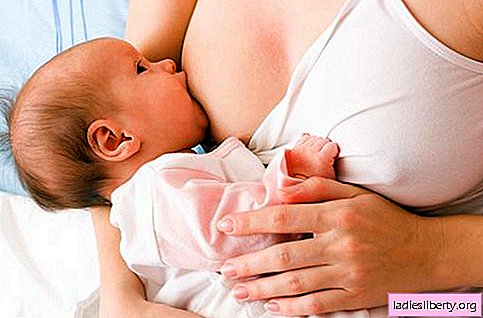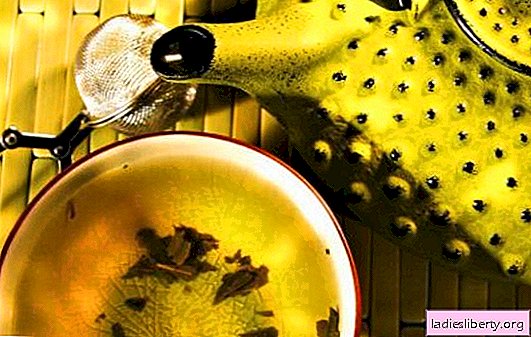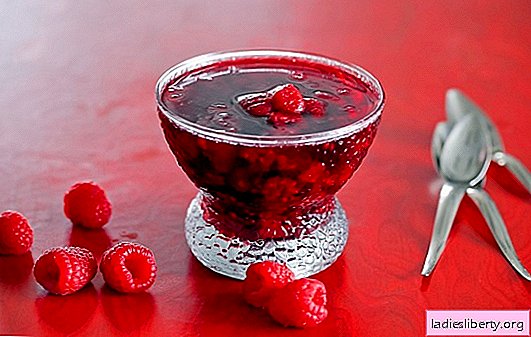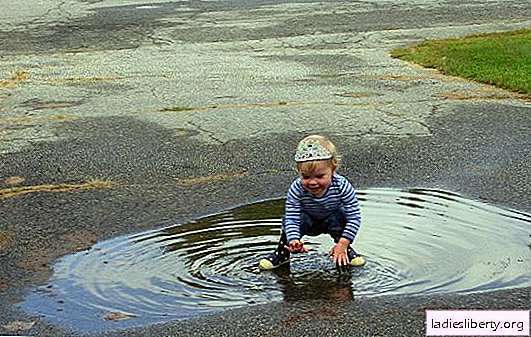
It has already been proven that breastfeeding is the most useful and safe way to feed babies. Breast milk has a unique composition, thanks to which the child is immune protected against various infectious diseases. It also contains taurine and polyunsaturated fatty acids, the amount and ratio of which is ideal for the formation and development of the central nervous system functions of the infant. Due to the presence of lactoferin in breast milk, the body of the baby is better absorbed iron, which is extremely necessary for him to prevent the risk of anemia.
Until the age of 6 months, breast milk is a source of all the necessary nutrients, vitamins, mineral and biologically active substances for the baby. Studies have proven that breastfeeding reduces the risk of many chronic diseases: diabetes, multiple sclerosis, inflammatory diseases of the gastrointestinal tract. Finally, mother’s milk is an ideal food product for an infant, because it is easily digested and well digested, it always has a constant temperature, which means that it is ready for use at any time and under any circumstances
There is another important aspect of breastfeeding. Breastfeeding helps maintain and strengthen the close emotional bond between the mother and the baby established during pregnancy. Thanks to frequent contact with his mother, the baby feels protected, he experiences positive emotions, which during this period can have a beneficial effect on the formation of his character.
Breastfeeding is also beneficial for mom's health, as it prevents the development of breast and ovarian cancer, as well as unwanted pregnancy. In addition, a nursing woman experiences an indescribable feeling of joy and peace when the baby sucks.
Breastfeeding - how to do it right
In order for the baby to get enough milk, and the nursing woman not to experience discomfort due to the appearance of cracks in the nipples, you need to be able to correctly apply the baby to the breast. Mom should deploy the baby with the whole body to herself and squeeze so that his face is close to the chest, and the chin touches her. The baby’s mouth should be wide open so that it captures most of the areola. Making deep slow sucking movements, the baby should be relaxed. Mom should not experience any pain in the nipple area.
Duration of feeding is a purely individual issue, it can even be different for the same child under different circumstances. Most babies are full after 15-20 minutes, however, for some, feeding should last at least half an hour. At the same time, agile “eaters” eat as much milk as slow ones. Therefore, if the “lazy" baby is torn prematurely from his chest, then he will remain hungry. It is necessary to give the child the opportunity to receive breast milk when he wants it, and in the quantity he needs. Moms of large babies should remember that they may need milk from both breasts.
How to improve breast milk quality
The quality of breast milk directly depends on the nutrition of the nursing mother. Therefore, in order for milk to be healthy and tasty, it should:
- avoid eating food to which the baby may be sensitive (garlic, onions, oranges, chocolate);
- categorically quit smoking so that toxic substances contained in tobacco smoke do not pass from its blood into milk;
- Avoid the use of drugs without consulting a doctor, since many drugs, if they get into milk, can harm a child;
- avoid alcohol, as it can cause damage to the brain of the child or slow its development;
- limit the use of coffee and strong tea, which in large quantities can be a cause of restless behavior of the child and even have a harmful effect on his brain;
- refuse to eat foods containing a large number of chemical components, preservatives and sugar substitutes;
- closely monitor what components are contained in the consumed products.
If the mother doubts about the possibility of using this or that product, not knowing what effect it will have on the baby, in the first days she should try to eat it a little while observing the child’s reaction, his stool, sleep, skin condition. If no disturbing changes are observed, it means that the product is absorbed by the baby normally and she can include it in her diet.
A nursing mother should have enough rest and avoid hard work, noisy companies, staying in a smoky room, stressful situations and other negative phenomena that prevent her from fully and calmly fulfilling her maternal responsibilities.
Breastfeeding outside the home (on a trip, on the street, in a store)
Moms who breastfeed on their trips do well without heavy bags of water, a bunch of bottles, a mixture, a heater and other items necessary for preparing artificial nutrition. And this is a big plus for breastfeeding. However, often they are embarrassed to give the baby breasts on the street, so they use a bottle of expressed milk or a mixture. In this case, having tried the bottle, the child can refuse to breast, realizing that milk can be obtained without the application of special efforts. It should be said that most people around the mother and baby always have an understanding of the need for such an action as feeding the baby in a public place, because in this situation, the mother thinks about the well-being of her child. Moreover, today, thanks to special clothes for nursing, others may not notice at all how this happens.
These clothes are designed so that when feeding you can open only a small part of the chest, sufficient for the baby to attach. It has camouflaged breast slots called "feeding secrets." Today, this clothing, which allows you to freely breastfeed your baby in public places, is presented in large numbers on the Internet and in various company stores. Thus, a mother can breastfeed her baby, being in a shopping and entertainment center, at an exhibition or concert, in a park or even at a business meeting, without being embarrassed and not embarrassing others.
How to increase lactation during breastfeeding
Unfortunately, today it is not uncommon for a nursing mother to have a significant decrease in the amount of milk in 2-3 months, or it will end completely. As a rule, this happens due to stressful situations, malnutrition or improper organization of the breastfeeding regimen.
How can I increase lactation during breastfeeding? First of all, with the help of breastfeeding "on demand" and regular nightly feeding.
Before the next feeding, you should drink a cup of warm tea with milk or a glass of juice, and then do a light massage of the mammary glands, stroking them clockwise.
A hot shower helps, in which the jets are directed to the mammary glands. After 5-10 minutes of such a warming massage, milk usually begins to arrive.
The production of milk is greatly influenced by the nutrition of women, which should be full and regular. To increase lactation in the diet of the mother must be present meat broths and soups, walnuts, juices and mineral water without gas.
Another important point that affects lactation is the full relaxation of a nursing woman. If the baby is naughty at night, that means that during the day mother should sleep with her baby.
There are homeopathic medicines that increase the level of prolactin hormone in a woman’s blood, which affects the production of breast milk. Also during lactation crises it is advisable to use special teas for nursing mothers. They include herbs - natural stimulants of lactation, such as nettle, anise, fennel, caraway seeds, lemon balm, so they help increase the amount of milk. You can buy such teas at a pharmacy or in children's supermarkets.
Use of a breast pump for breastfeeding
Sometimes situations arise when it is necessary to express milk. Most women do it manually. But if the mother is weakened due to overwork or illness, or if the manual pumping technique is difficult for her, then the use of a breast pump is advisable.
Its use does not imply any special skills. However, it must be remembered that with improper use of the breast pump, a woman can experience various problems in the form of deepening of the nipple cracks, hyperlactation and even addiction.
Using a breast pump, a nursing mother should ensure that there are no pain in the chest. Before using it, the breast should be prepared for the process by lightly stroking from the periphery to the center, taking a warm shower and carrying out other actions that contribute to the flow of milk and, as a consequence, easier pumping.
The breast pump should be installed at a comfortable level of traction and make sure that the nipple is in the center of the funnel. Before expressing, wash your hands.
Breast milk storage
Sometimes, due to various circumstances, mothers have to express and store their milk for the baby. In doing this, she must remember some rules.
It is possible to store expressed milk at room temperature (up to + 22 ° C) for 10 hours, provided that it is not exposed to direct sunlight. Expressed milk can be stored in the refrigerator for up to 2 days, and in the freezer compartment for up to 3 weeks. In a separate freezer, at a temperature below -18 ° C, milk retains its properties for about 3 months.
To store expressed breast milk, it is better to use special sealed bags or containers with a tight-fitting lid to prevent them from absorbing odors from the refrigerator.
A change in temperature leads to an increase in the volume of milk, so you should not fill the container for storage completely.
Each milk container must be labeled with the date and time of decantation.
Prepare milk for storage in small portions, designed for one feeding.
Prepared milk should be heated in a water bath, and not in the microwave. It is also impossible to boil it, so that the beneficial substances and antibodies contained in it are not destroyed.
Breastfeeding Hyperlactation
Excess milk, as well as its lack, is a very unpleasant phenomenon. Hyperlactation is manifested by a feeling of fullness in the chest, swelling of the mammary glands and their soreness, the appearance of stagnation of milk and its constant leakage. If the baby gets too much front milk, his tummy begins to swell, he becomes restless. As a rule, the excessive milk intake and prolonged intensive pumping after feeding become the cause of the excess milk, so you need to fight it by stopping these actions. If hyperlactation is an innate feature of the mother, then coping with it is very difficult. In this case, breast-feeding experts advise to take the path of eliminating lactating products (nuts, fish, chicken, rice, cheese and feta cheese) from the diet, as well as limiting hot drinking.
Breastfeeding
As we have already said, up to 6 months, mother’s milk fully satisfies the baby’s nutritional needs. However, there comes a time when his growing body needs more and more products to meet its needs. How to determine that the baby is ready for the introduction of complementary foods? This, first of all, will be indicated by its weight, which should be at least twice as large as the weight of the baby at birth. Also, the baby can be considered ready for the introduction of complementary foods, if he:
- stopped reflexively spitting out thick food (this can be seen by giving him some porridge or mashed potatoes from a spoon); - animates at the sight of food, opening its mouth when hungry, and turns away from it when saturated;
- asks for a table to parents and, sitting in the arms of mom or dad, trying to try food from their plates.
You should start feeding your baby with homogeneous cereals or vegetable puree (the latter option is most preferred for children with a tendency to constipation). First, the baby is offered mashed potatoes from one type of vegetable that has a delicate texture (for example, pumpkin, cauliflower), and then other vegetables are introduced. When introducing a new product, you should observe for about a week how the baby tolerates it, and only then enter the next one.
Only then the child’s diet is gradually supplemented with cottage cheese, egg yolk, meat and fish, which are valuable sources of animal protein, vitamins and valuable minerals (iron, calcium, phosphorus, etc.).
How to wean a baby from breastfeeding
To what age should a child be breast-fed and how to wean him from this when the time comes? There are no unequivocal and general answers to this question. Experience shows that a child who is developing normally is completely ready for excommunication by the age of one and a half years. However, whenever this process occurs, a woman should remember that for the baby he is the first serious stress in his life, so he expects support from his mother, his closest person.
That is why, weaning the baby from the breast, the mother should maintain close contact with him and find a variety of psychological techniques to explain the reasons for this situation. For example, to say that the milk in the chest is over, offering him a drink from the mug. Gradually, the baby will believe that it is, and will stop asking for breasts. Psychologists believe that simply closing the breast and not giving it to the child without giving a reason is a very traumatic way for him, which can lead to developmental problems and psychological illnesses.
Termination of lactation (how to stop lactation)
After weaning, a question arises for mom as to how to stop lactation. The safest and most effective way to do this is to take appropriate medications. Trying to stop the production of milk by such grandmother's methods as tightening the breasts with bandages, reducing fluid intake, etc., the mother runs the risk of making a serious complication.
Today, the pharmaceutical industry offers a number of drugs whose action is aimed at stopping lactation by inhibiting the production of prolactin - a hormone that stimulates the production of milk. These include Bromocriptine (Parlodel), Cabergoline (Dostinex) and others. Given that these drugs have a number of contraindications and side effects, they should be taken only after consulting a doctor.
Traditional medicine suggests suppressing lactation by taking 0.5 cups of infusion of sage or peppermint three times a day (to prepare 1 tsp. Of raw material, pour a glass of boiling water and insist for about 3 hours). However, it should be remembered that the intake of herbal preparations can also not be carried out uncontrollably, therefore, before using folk remedies, you should also consult a doctor.
Video: All About Breastfeeding
10 myths about breastfeeding
This part of the article focuses on the most common misconceptions of nursing mothers about breastfeeding and arguments are presented that refute these misconceptions.
Myth One. Nipples need to be prepared for childbirth.
Often you can hear from mothers and grandmothers that before giving birth, you need to rub your chest with a waffle towel so that the skin on your nipples becomes rougher. It is believed that this will help to avoid cracks in the nipples. In fact, this cannot be done. The fact is that breast stimulation provokes uterine contractions and can cause premature birth.
Second myth. Milk does not appear immediately, therefore, immediately after the birth of the baby, it is necessary to feed.
Everyone knows that colostrum first appears, and milk appears only 3-5 days after birth. And compassionate mothers diligently offer the newborn a mixture of fear that the child will remain hungry. But in vain! Firstly, colostrum itself is an invaluable source of nutrients, and secondly, it has a higher nutritional value than milk. Accordingly, colostrum is enough for the child, which he sucks from the mother’s chest.
Myth three. If the baby nibbles the nipples, then breast-feeding turns into flour and requires a transition to the mixture.
Quite often you can hear the complaints of mothers that the child from the first days bit his nipples in the blood, and therefore the mother transferred the baby to the mixture. Unfortunately, not every mother understands that behind these complaints is only her own ignorance, as well as unwillingness to address this issue to knowledgeable specialists. The fact is that the correct attachment to the breast and, accordingly, the correct capture of the baby's nipple completely eliminates the lactating mother from these problems.
Myth Four. It is necessary to constantly express.
Often close relatives, and sometimes doctors recommend expressing until the breast is completely empty, motivating their recommendations with possible mastitis or lactostasis. In fact, pumping is only necessary in case of pain in the chest, if the chest "stiffens" or is poured so much that the nipples are stretched and the baby cannot capture the nipple. In all other cases, frequent placement of the baby in the chest is sufficient.
Myth Five. The child often cries, which means he does not eat up.
Indeed, on artificial feeding, the child eats according to the regimen and for the first time sleeps in the intervals between feedings, while the baby on breastfeeding may require breasts at different intervals. Everything is very simple: the mixture is much heavier and more digestible compared to breast milk, while milk can be absorbed completely and very quickly. In addition, do not forget that it is much harder for a child to suck milk from his chest than from a bottle.
Myth Six. Milk is not fat.
This general misconception about the fat content of milk has deprived so many children of breastfeeding. Moms express a little milk, they see that it is bluish in color and immediately conclude that the milk is not fat and there is no sense in breastfeeding. In fact, breast milk is divided into two categories - near milk, the bluish tint that the baby perceives as a drink, and deep, more fat and nutritious, which is considered food for the baby. When breastfeeding, the baby first sucks the near milk and only then gets to deep. It is practically impossible to manually express this deep milk and that is why nursing mothers make erroneous conclusions. By the way, the fat content of breast milk in all women is approximately the same - about 4%.
Myth Seven. Milk is missing.
A lot of mothers feed their babies a month or two, and then transfer to the mixture. Why? Because they think that milk is disappearing. Is it so? When the mom begins to arrive, the milk is poured very heavily, sometimes even excess milk appears. Mom rejoices that she has a lot of milk and she will safely feed her baby for at least 6 months. But after a month, milk becomes less and less, mom starts to worry, drink all kinds of means to increase lactation, but by and large nothing helps. And then mother reluctantly begins to feed her baby with a mixture, and then completely translates completely to artificial feeding. What is really going on? First, there is an excess of milk and the child at the same time sucks out exactly as much as he needs. Gradually, the mother’s body begins to adapt to the needs of the baby and produce just as much milk as the baby sucks. There are no surpluses, the chest is not poured. In addition, the main amount of milk is produced precisely in the process of sucking a child’s breast. So there is no need to worry in this case. Lack of milk is determined not by the degree of filling of the breast, but firstly by weight gain, and secondly - by the daily amount of urination of the child.
Myth Eighth. A nursing mother should eat a lot so that there is milk.
“Eat more, you feed!” Probably every lactating mother heard this phrase. Undoubtedly, a nursing mother should eat well and properly, receive as many vitamins as possible. But this is necessary not only for the formation of milk, but for the mother herself. Milk with properly organized breastfeeding will be even if the mother will sit on bread and water. In this case, all the necessary useful and nutritious substances will enter the milk from the mother’s body, and the woman herself will “dry” before her eyes. That is, we conclude - you must eat, but the basic principle is not "a lot", but "useful."
Myth Nine. If a woman is sick, then breastfeeding must be stopped.
There is a very small category of diseases that are a contraindication for breastfeeding. And in the same way, there are a number of diseases that are treated with drugs incompatible with guinea. In all other cases, breastfeeding is not only not contraindicated, but also protects the baby, because together with milk, the mother passes the baby antibodies.
Myth Ten. Mixes and breast milk are almost identical, therefore there is no big difference than to feed.
Now there is a huge selection of dry mixes, which in their composition are as close as possible to breast milk. Approximate, but not identical. Breast milk is a unique product filled with all the necessary vitamins and minerals and adapted to the needs of each individual child and not a single milk mixture can replace mother’s breast milk for the child. In addition, we should not forget that breastfeeding is not only nutrition for the baby, but also a huge psychological connection between mother and baby. This connection gives the baby the opportunity to more often feel the closeness of the mother, psychological stability and emotional security.
Of course, every woman’s business is how and how to feed her child. Someone refuses to breast-feed by mistake, someone consciously goes for it. But still I would like to say that the health of the child requires increased attention of parents, and health is directly dependent on nutrition. Therefore, I would like to hope that before making any decision, most parents will become as familiar as possible with all the available information on this issue.
Save
Comments











